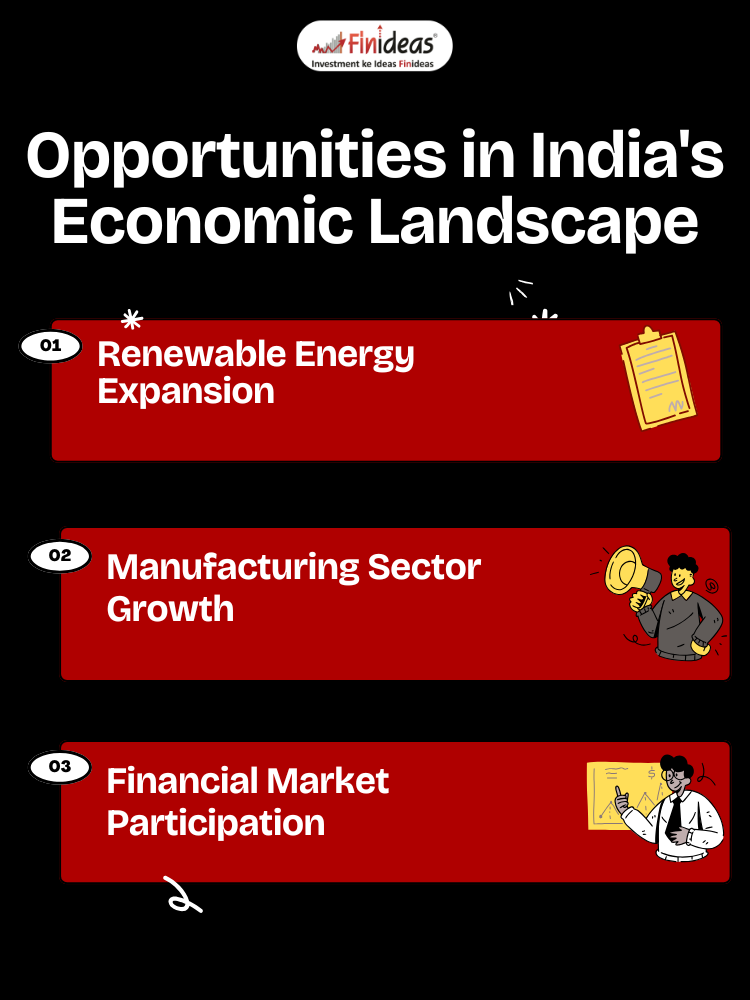SWOT Analysis of the Indian Economy
A SWOT analysis evaluates the Strengths, Weaknesses, Opportunities, and Threats of a nation’s economic landscape. As of 2025, India stands as a rapidly evolving economy with a mix of robust growth drivers and notable challenges. Let’s delve into the current SWOT analysis of the Indian economy.
Strengths of the Indian Economy
Robust GDP Growth
Demographic Advantage
- A significant portion of India’s population is under 35, providing a youthful and dynamic workforce that fuels innovation and consumption.
- A significant portion of India’s population is under 35, providing a youthful and dynamic workforce that fuels innovation and consumption.
Location Advantage
- India’s location offers several strategic advantages for trade, commerce, and connectivity. Its central position in the Indian Ocean, bordering major shipping routes, and extensive borders with neighboring countries make it a key transit point and regional hub. This facilitates trade with countries in the East and West, and strengthens regional partnerships.
- India’s location offers several strategic advantages for trade, commerce, and connectivity. Its central position in the Indian Ocean, bordering major shipping routes, and extensive borders with neighboring countries make it a key transit point and regional hub. This facilitates trade with countries in the East and West, and strengthens regional partnerships.
Advancements in Digital Payments
- The Unified Payments Interface (UPI) processed approximately 1,830 million transactions valued at ₹24.77 lakh crore in March 2025, reflecting widespread adoption of digital financial services.
- The Unified Payments Interface (UPI) processed approximately 1,830 million transactions valued at ₹24.77 lakh crore in March 2025, reflecting widespread adoption of digital financial services.
Growing Middle Class
- Projections indicate that by 2030, over 50% of India’s population will belong to the middle class, driving demand for diverse goods and services.
Weaknesses of the Indian Economy
Youth Unemployment
- The youth unemployment rate stood at 16.03% in 2024, indicating challenges in job creation for the younger demographic.
Fiscal Deficit Concerns
- India’s fiscal deficit was recorded at 5.6% of GDP for FY2024, slightly better than anticipated but still a point of concern for economic stability.
Infrastructure Bottlenecks
- Despite progress, infrastructural challenges persist, particularly in rural areas, affecting connectivity and access to essential services.
Opportunities in India’s Economic Landscape
Renewable Energy Expansion
- India aims to achieve 500 GW of non-fossil fuel energy capacity by 2030, presenting vast opportunities in the green energy sector.
- India aims to achieve 500 GW of non-fossil fuel energy capacity by 2030, presenting vast opportunities in the green energy sector.
Manufacturing Sector Growth
- Initiatives like Make in India are bolstering the manufacturing sector, attracting foreign investment, and enhancing export potential.
- Initiatives like Make in India are bolstering the manufacturing sector, attracting foreign investment, and enhancing export potential.
Financial Market Participation
- With increasing financial literacy, more individuals are exploring investment avenues. Strategies like the Index Long Term Strategy (ILTS) offered by Finideas enable investors to participate in India’s top 50 companies (NIFTY 50), promoting wealth creation through disciplined, long-term investments.
Threats to the Indian Economy
Geopolitical Tensions
- Recent conflicts, such as those with Pakistan, have the potential to impact investor confidence and economic stability.
- Recent conflicts, such as those with Pakistan, have the potential to impact investor confidence and economic stability.
Climate Change Challenges
- India’s renewable energy sector faces underfunding, with investments falling short of the $68 billion needed annually to meet the 2030 target, posing risks to sustainable development.
- India’s renewable energy sector faces underfunding, with investments falling short of the $68 billion needed annually to meet the 2030 target, posing risks to sustainable development.
Global Economic Fluctuations
- As an integral part of the global economy, India is susceptible to international market dynamics, trade wars, and economic downturns that can affect growth trajectories.
- As an integral part of the global economy, India is susceptible to international market dynamics, trade wars, and economic downturns that can affect growth trajectories.
India’s Renewable Energy Ambition: Targeting 500 GW of non-fossil fuel energy capacity by 2030, unlocking vast opportunities in the green energy sector.
Conclusion
India’s economic landscape in 2025 is characterized by significant strengths and promising opportunities, balanced by certain challenges and external threats. A comprehensive understanding of these factors is crucial for policymakers, investors, and businesses aiming to navigate and contribute to India’s growth story effectively.
What do you perceive as the most critical factor influencing India’s economic future in the next five years? Share your thoughts in the comments below!
Happy Investing!
This article is for education purpose only. Kindly consult with your financial advisor before doing any kind of investment.


